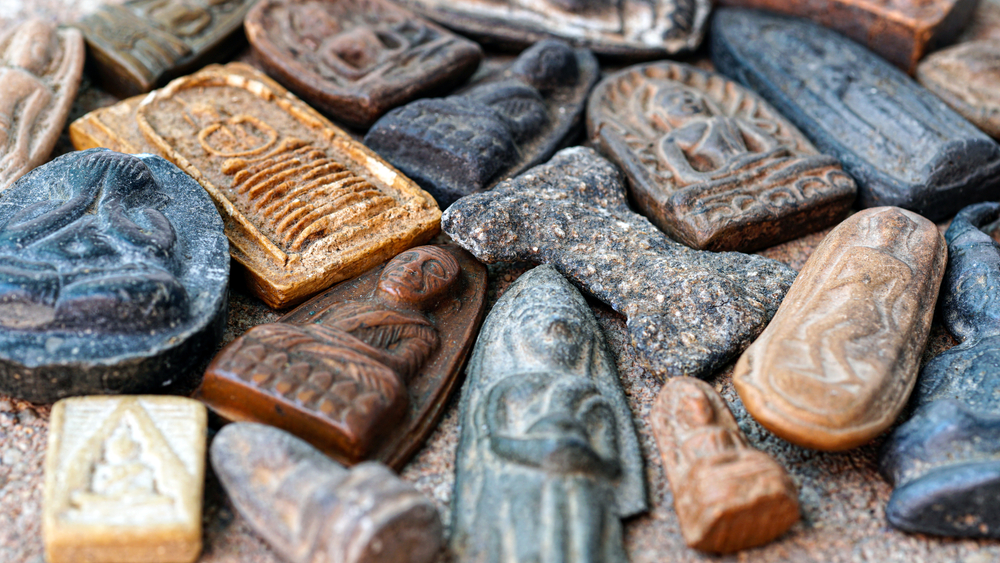Beyond Dungeons and Dragons: Amulets, Talismans, and Other Protective Magic

Magic and fantasy fiction go hand in hand. Magic is woven into the fabric of fictional universes such as Thedas in the Dragon Age video games or Faerûn in the Dungeons & Dragons series. People can possess magical powers, but so can inanimate objects. Want to foil a scrying sensor? You should wear an Amulet of Proof. Going up against a big baddie? Equip the Kitty’s Collar amulet and you’ll instantly resurrect after dying. But protective magical objects aren’t limited to fictional battles. For many ancient peoples, they offered real safeguards from serious threats – both corporeal and invisible.
Common Threats in the Antiquity
Our ancestors faced a world that was full of perils. If you lived during those times, your first challenge was surviving to adulthood. Our World in Data estimates that nearly half of all children born before the 20th century died before reaching adolescence. In antiquity, those figures ranged between 25% and 57%.
So what killed off these children? Deadly diseases were common, but other threats included famine, accidents, and violence. Some societies practiced infanticide, leaving newborns to die if they were disabled, the wrong gender, or one of too many mouths to feed.
With so many ways to die, you’d think that reaching adulthood would offer some reprieve. But that wasn’t always the case. Threats of disease, starvation, accidents, and violence remained. Depending on where and when you lived, you could become a casualty of war. If you were royalty, someone who wanted your throne badly enough could remove you from it – permanently.
Protection Against Evil
Humans in antiquity devised several ways of dealing with their hostile atmospheres. Amulets, charms, and talismans were common alternatives. These objects are examples of apotropaic magic, aimed at shielding their wearers from harm. Apotropaic magic doesn’t just involve physical objects – other means include crossing one’s fingers or knocking on wood.
Amulets in the Ancient World
Amulets existed in many societies, but some of the best-preserved specimens come from ancient Egypt. New York’s Metropolitan Museum of Art shows some of these amulets, which were usually worn by living people or placed near a person’s mummified body before interment. Many were fashioned as pendants or rings shaped like gods, goddesses, animals, or symbols. Some bore text inscriptions. One important key to creating an amulet was a magical act that granted its power.
Other ancient cultures used amulets to ward off evil. Roman parents gave their children protective amulets made from precious metals or gemstones. Archaeologists have found metal versions in ancient Palestinian sites, some inscribed with Hebrew letters. Hand of Miriam amulets were designed to protect wearers against the evil eye.
Talismans and Charms
Amulets are classified as talismans, which are handcrafted objects made to protect those who possess them. But “talisman” is a broader term that also applies to clothing, weapons, or even text written on pieces of parchment. Some Stone Age talismans were inscribed with swastikas, which were universal symbols of prosperity and luck until they were co-opted by the Nazi Party during the 1920s.
Talismans of all sorts were also common throughout the Islamic world. For instance, artisans crafted and engraved metal talismanic bowls to heal certain illnesses. Others, such as necklaces or shirts, served as vehicles of divine protection for their wearers.
Enduring Belief in Unseen Forces
The idea of magic may seem absurd in modern times. After all, we have science and reason to guide us, right? Yet belief in the supernatural persists in many cultures all over the world. Evil eye pendants are becoming high fashion, and good luck charm jewelry remains popular. We aren’t living in ancient times, but we face equal uncertainty as COVID-19 and climate change threaten our world. And with such uncertainties, relying on magical objects may not seem so silly after all.

